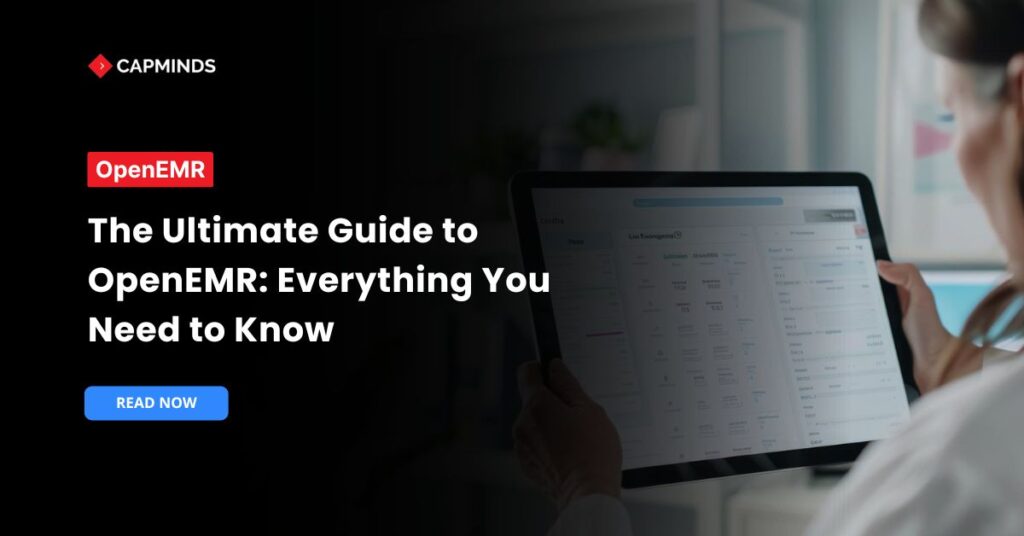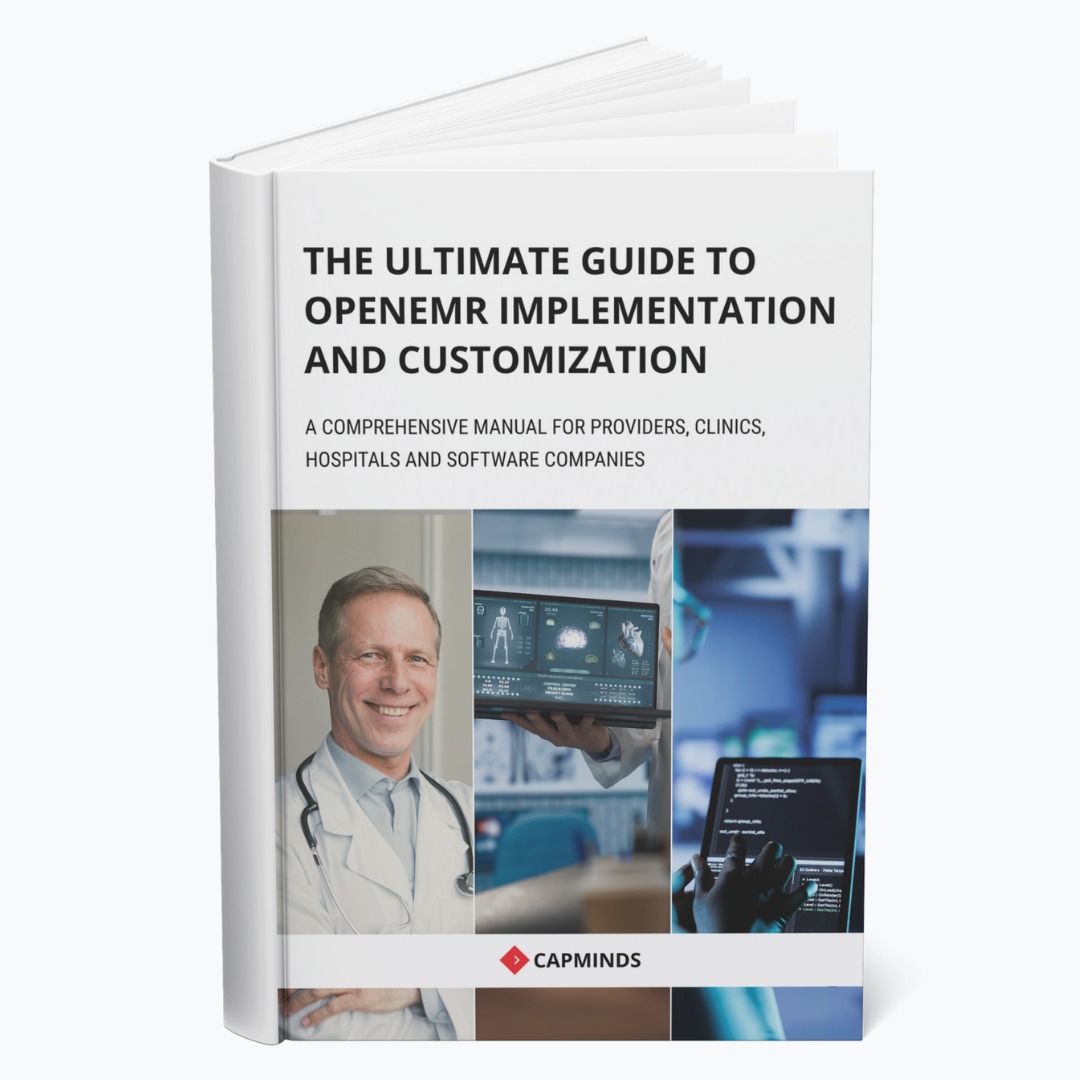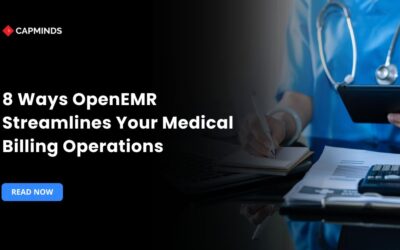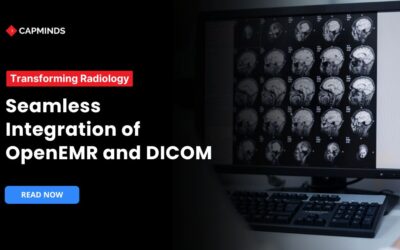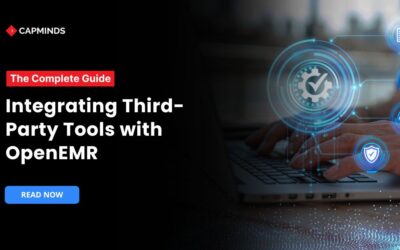The Ultimate Guide to OpenEMR: Everything You Need to Know
OpenEMR is an open-source, free medical records management and medical billing. It assists medical professionals in keeping patient data safely in digital format. Hospitals and clinics utilize OpenEMR to track prescriptions and schedule appointments. Unlike other costly software, OpenEMR provides a flexible and customizable solution.
It is preferred by most healthcare professionals because it adjusts to their individual practice needs. It is suitable for small clinics, huge hospitals, as well as private practices. The system supports several languages and therefore can be utilized across different nations. OpenEMR also complies with stringent healthcare laws to protect patient information. In this blog post, we have shared every about OpenEMR, from its functionalities, and installation procedure, to practical uses.
What is EMR & EHR
An EMR is a digital version of a paper-based record. It stores medical details, including history, diagnoses, and medication prescriptions. Healthcare professionals use EMRs for tracking patient data across multiple visits. These records help in organizing patient information in structured formats. They are useful for managing treatment plans and medical case histories.
An EHR, however, is broader than an EMR system. It allows sharing of health information across different medical institutions seamlessly. Hospitals, clinics, and specialists use EHRs for coordinated patient care. These systems support better collaboration between multiple healthcare professionals efficiently.
- EMRs stay within one medical facility for internal patient documentation.
- On the other hand, EHRs provide access to external care providers directly.
- They help in managing healthcare across various providers in different locations.
- Both EMRs and EHRs enhance efficiency, accuracy, and medical record accessibility.
Why Open Source EHRs Are Gaining Popularity
Open-source EHR systems are becoming widely used in healthcare today. They offer cost-effective solutions without requiring expensive licensing fees. Many hospitals prefer open-source software because of its high customization abilities and free software. These systems let healthcare providers adjust features to match their workflows.
Additionally, open-source platforms provide greater transparency in data handling and security. Developers can inspect and modify the system based on requirements. Unlike proprietary software, open-source tools allow more flexibility for users. They provide interoperability, ensuring smooth integration with existing hospital management software.
Support for open-source EHRs comes from global developer communities. Regular updates improve security, functionality, and user experience efficiently. These systems continue evolving with industry needs and compliance regulations.
What Is OpenEMR?
OpenEMR is a free, open-source software for managing medical records. Among all the free EMR options available, OpenEMR stands out from all. OpenEMR is a free and open-source software providing electronic medical records, medical billing, patient scheduling, and practice management features – fully certified by the ONC as a complete EHR.
It has been estimated that OpenEMR is installed successfully in over 15,000 healthcare facilities globally which are ultimately serving more than 90 million patients.
The system can run on Windows, Linux, Mac OS X, and also on other platforms. Healthcare providers access it on desktops, laptops, and cloud-based servers. OpenEMR follows global security standards, ensuring compliance with healthcare regulations.
It supports multiple languages, making it useful worldwide. A large developer community maintains OpenEMR with continuous improvements. The system integrates with various healthcare applications and third-party tools. Many healthcare professionals choose OpenEMR for its flexibility and reliability.
The top features of the OpenEMR include:
- Medical Billing
- Clinical Decision Rules
- Patient Portal
- Patient Demographics
- Patient Scheduling
- Electronic Medical Records
- Prescriptions
- Clinical Reports
- Multilanguage Support
- Security & support
Core Features of OpenEMR
1. Medical Billing & Claims Processing
OpenEMR simplifies billing with automated claim submission and payment tracking. The system supports both electronic and paper-based claims effectively. Users can generate invoices and submit claims directly to insurers. Additionally, it helps reduce errors by ensuring correct billing codes.
2. Clinical Decision Support
This feature helps doctors make informed medical decisions with real data. It provides alerts, reminders, and treatment suggestions for various conditions. Physicians receive guidance based on patient history and clinical trends. The system improves diagnosis accuracy and enhances patient treatment outcomes.
Related: How to Optimize Clinical Decision Support with OpenEMR’s AI-Powered Alerts & Reminders
3. Patient Portal & Online Appointment Scheduling
Patients can schedule appointments online through OpenEMR’s patient portal. The system sends reminders for upcoming visits and scheduled consultations. Users can also access lab reports and prescription details easily. Secure messaging allows communication between doctors and their patients.
4. E-prescribing & Pharmacy Integration
OpenEMR includes electronic prescription management for better medication tracking. Providers can send prescriptions directly to pharmacies in real time. It reduces prescription errors and improves patient medication adherence. The system also alerts doctors about potential drug interactions immediately.
Related: How to Install and Setup the New Weno Module in OpenEMR
5. Multi-language Support & Global Usage
OpenEMR supports more than 30 languages for worldwide adoption. It helps clinics in non-English-speaking regions use medical software effectively. Language customization allows institutions to modify translations based on requirements. This makes OpenEMR a global-friendly software solution for clinics.
6. Customizable Clinical Forms
Providers can create and modify clinical forms based on preferences. These forms help record patient details in structured and organized formats. Customization enables capturing specific health data required for different treatments. OpenEMR provides various templates for different medical specializations.
Related: Speed Up Documentation with AI and Voice-to-Text: A Guide for OpenEMR LBF Forms
7. Role-Based Security & HIPAA Compliance
User roles in OpenEMR define access levels and permissions securely. Only authorized users can view, edit, or modify patient records. The system follows HIPAA guidelines to protect sensitive health information. Audit logs track user actions, ensuring security and transparency.
8. Advanced Reporting & Analytics
OpenEMR provides advanced reporting features for tracking patient data insights. Reports cover clinical, financial, and operational metrics efficiently. Healthcare providers analyze trends and patterns for better decision-making. The system generates visual charts, graphs, and statistical reports accurately.
9. Telehealth Integration
OpenEMR integrates telehealth services for remote consultations and virtual visits. Providers can conduct video appointments through a secure online platform. Patients join virtual consultations using links from appointment notifications. This feature supports accessibility and convenience for both parties.
Related: The Integration of Telehealth with OpenEMR: What You Need to Know
10. AI-powered Automation for Administrative Tasks
OpenEMR leverages automation to streamline administrative workflows efficiently. Appointment reminders, billing processes, and data entry tasks run automatically. AI-driven analytics help predict patient needs and optimize scheduling. These features reduce manual work and improve operational efficiency.
Specialized Modules & Add-ons
1. Mental Health & Psychiatry Module
Psychiatrists use OpenEMR to document mental health treatment plans securely. The system supports progress tracking for therapy and medication adjustments. Secure patient notes help maintain confidentiality and compliance with regulations.
2. Physiotherapy Module
This module assists physiotherapists in planning and tracking therapy sessions. It helps monitor patient progress and adjust rehabilitation programs accordingly. Physiotherapists can create custom exercise templates for specific recovery plans.
Related: How to Customize OpenEMR for Physical Therapy Practice
3. Dental EMR Capabilities
Dentists use OpenEMR to document oral health records and procedures. The system supports dental charting, imaging, and treatment plans seamlessly. It integrates with digital X-rays and patient history records easily.
4. Integrations with Lab Information Systems
OpenEMR connects with lab systems for automated test ordering and results. Labs send reports directly to patient records without manual entry. This integration reduces errors and speeds up the diagnostic process.
OpenEMR vs. Paid EHR Software
| Feature | OpenEMR (Free & Open-Source) | Paid EHR (Proprietary) |
| Cost | No Licensing Frees Required | Subscription-based or licensing fee |
| Customization | Fully customizable | Limited customization |
| Interoperability | FHIR & HL7 compliant | Often restricted to vendor-specific integrations |
| Support | Community & paid support options | Vendor-managed support |
| Data Security | HIPAA & GDPR compliance with self-managed security | Vendor-controlled security & compliance |
| Scalability | Highly scalable | Dependent on vendor |
Cost Breakdown of OpenEMR Adoption and Implementation
1. Hosting
- Hosting OpenEMR locally requires infrastructure, which includes servers and security.
- Cloud-based hosting provides flexibility and easier maintenance without hardware investments.
- Amazon Web Services and other cloud providers support OpenEMR hosting.
- Cloud costs vary based on data storage and usage requirements.
2. Support and Maintenance
- OpenEMR support comes from its community or third-party professional services.
- Some businesses hire developers for ongoing technical support and software maintenance.
- Third-party vendors offer managed services, which can be costly for small clinics.
- Practices should budget accordingly for future software updates and security patches.
3. Additional Services
- Migrating patient data requires careful planning and specialized data conversion services.
- Training employees on OpenEMR ensures better system utilization and efficiency improvements.
- Compliance with regulations like HIPAA adds additional costs for security implementations.
- Choosing the right service provider determines the long-term success of OpenEMR.
How to Get Started with OpenEMR
Implementing OpenEMR involves several key steps:
1. Step-by-step installation guide (Windows, Linux, Mac OS)
Download: First, download OpenEMR from the official website and verify compatibility.
System Requirements: Ensure your computer meets the minimum requirements for smooth software installation.
Installation: Follow the provided installation instructions carefully to avoid unnecessary setup errors. Check out the below blogs based on your system OS for OpenEMR Installation. Configure essential settings before launching OpenEMR for first-time use.
Installation Guides:
- How to Install OpenEMR on Linux 2024
- How to Install OpenEMR on Windows 2024 (The Ultimate Guide)
- The Ultimate Guide to OpenEMR Complete Installation 2024 (MacOS)
2. Choosing the right hosting (Local vs. Cloud hosting)
Decide whether to host OpenEMR locally or use cloud hosting.
Local Hosting: Local hosting offers control but requires more technical knowledge for setup.
Cloud Hosting: Cloud hosting simplifies maintenance and security but involves subscription costs. Evaluate both options based on your practice’s size and resources.
3. Initial configuration & system setup
Customization: After installation, customize OpenEMR settings to align with practice workflows.
User Roles and Permissions: Configure user access permissions to ensure secure handling of patient records. Enable essential modules for scheduling, billing, and medical record management. Perform a system test before allowing staff to use OpenEMR.
Related: 5 Common Mistakes Practices Make When Setting Up OpenEMR
4. Adding users, roles, and security permissions
User Creation: Assign user roles to doctors, nurses, and administrative staff members. Set permission levels based on job responsibilities within the healthcare practice.
Access Control: Restrict unauthorized access to confidential patient data for security compliance. Regularly review user access logs to identify potential security risks.
5. Customizing templates and forms
Form Creation: Create custom medical forms for documenting patient visits and treatments. Use OpenEMR’s form editor to design fields based on needs.
Template Management: Save templates for repeated use, improving efficiency for medical staff. Test custom forms before making them available for live patient interactions.
Best Practices for Data Migration from an Old EHR System
- Backup all existing patient records before initiating any data transfer.
- Use mapping tools to match old data fields with OpenEMR.
- Conduct small-scale testing before full migration to prevent unexpected data loss.
- Train staff on the new system to reduce transition-related errors.
Common Challenges & How to Overcome Them
Even though OpenEMR is useful, some challenges may slow implementation. However, solutions exist to help providers handle these issues efficiently.
1. Data migration issues & solutions
Challenge: Old systems store data differently, causing migration problems for providers.
Solution: Experts should handle data conversion to ensure accurate transfers. After that, testing should confirm that the records match the original data.
2. Customization challenges for specific specialties
Challenge: OpenEMR offers basic features that may not fit all practices.
Solution: Clinics should modify forms to meet their unique needs. If needed, developers can build extra tools for better functionality.
3. Compliance & security concerns
Challenge: Medical data must stay private, following strict security laws.
Solution: Practices should update software to fix possible security issues. Additionally, strong passwords and encryption help protect patient information properly.
4. Training staff for OpenEMR adoption
Challenge: New systems take time, and staff may struggle to adapt.
Solution: Hands-on training should introduce OpenEMR features gradually. Online guides also help employees learn at their own pace.
5. Finding reliable support and maintenance services
Challenge: OpenEMR lacks built-in vendor support like paid EHR systems.
Solution: Healthcare providers should work with OpenEMR service professionals. Regular maintenance keeps the system running without major technical problems.
CapMind’s OpenEMR Customization and Integration Service
CapMinds OpenEMR consigns clinicians with the best features and ways to integrate. It makes their workflows more efficient and filtered.
The integrated features will allow them to combine the ability of patient record management with conceptual and concurrent reminders.
This enhances the process of decision-making and improves patient care and quality.
- At CapMinds, OpenEMR custom solutions are developed with much curation and accuracy to match the special practice needs.
- It will be low-cost, and the perfect budget solution for your practice’s long-term future.
- CapMinds OpenEMR prioritizes secure data management & ensures compliance with industry regulations, offering healthcare providers peace of mind.
Get the best technologies and HIPAA-compliant and efficient OpenEMR from CapMinds that can be tailored to fit your practice.
Our OpenEMR services facilitate a Modern User Interface (UI), customization, production support & training. It also facilitates billing, report & specialty enhancements, clearing house integrations, e-prescription, cloud, and more.
“Get the most experienced, proven, and perfect professional support for your OpenEMR”
